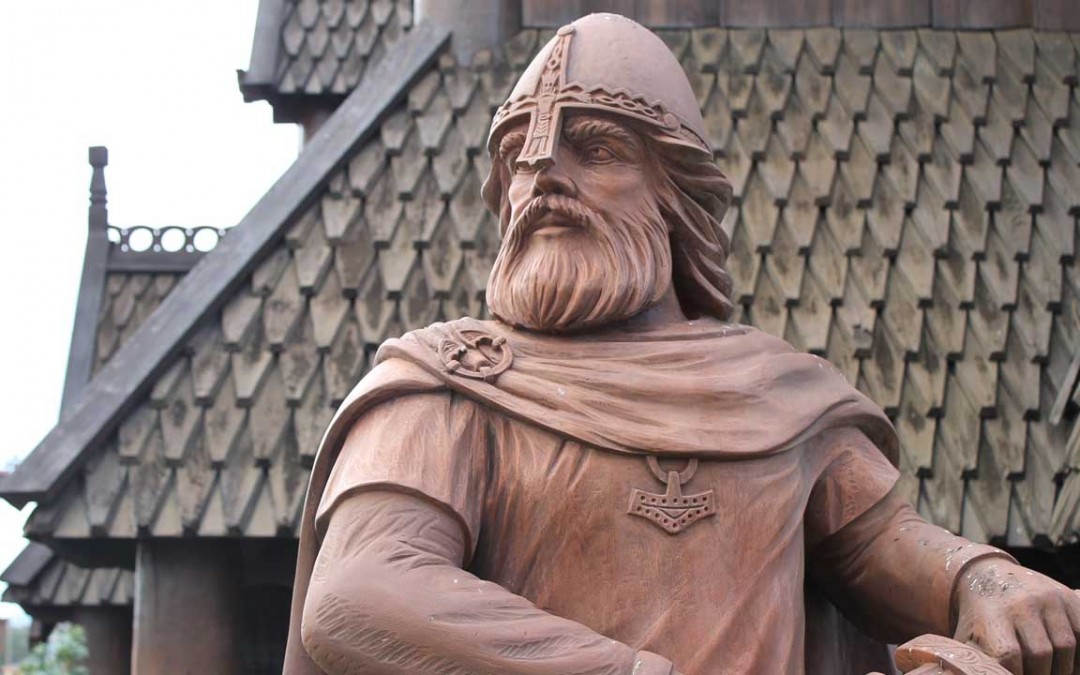Who was Ivar the boneless?
Ivar Ragnarsson was the son of the King of Sweden. As a prince, he was gifted with military leadership. He gained a reputation as a fearless commander of some of the most successful Viking armies of the Viking age. He is now better known by his nickname: Ivar the Boneless – a name that we can’t be sure of how he gained. There are a number of interpretations of it’s meaning.
The Name Of Ivar The Boneless

His name written in 15th century text
Historians have long been arguing over what his nickname actually means about him. One theory is that it’s an indication that he was a very physically capable soldier, maybe his flexibility led people to jokingly call him boneless.
Another theory is the complete opposite. In 1949, the Danish historian Knud seedorf put forward the idea that Ivar the boneless suffered from brittle bone disease. That he was unable to walk and even needed to be carried on top of a shield. That his position as son of a King gave him the opportunity to live whereas others with his condition would not be able to. But Ivar the boneless was said to be a ferocious warrior, who was known for his involvement in battles. It is possible that he suffered from a slightly less severe condition, where he was unable to walk but could still use a longbow, allowing him to engage in battle.
As a warrior
He served as a warrior in Denmark where he was said to lead an army of Berserker warriors. A Berserker warrior was a type of Viking warrior who were notorious for the rage and fury they took into the battle with them. Their trance-like fury was said to strike fear into their enemies, often causing them to drop their weapons and flee. To be able to lead these men, Ivar the boneless would have needed to be an intimidating leader. And he was often described as one – he was strong enough go use a bow and arrows far more heavy and damaging than a regular soldier. He was described as towering over his opponents, as more of a giant than a man. This would seem to harm the theory that he was disabled.
Invasion Of England
In 865 AD, he led a massive invasion of England. They arrived in Autumn and set up camp for the winter. After winter, his army invaded Northumbria. Northumbria was in the middle of a civil war so it was a great time for a foreign army to capitalise on the chaos. The civil was was between Ella of Northumbria and Osberht of Northumbria. Each of them claimed the thrown as their own, and were willing to die for it. In the end, both of them lost the thrown and were forced to flee the region. Ivar the boneless captured the Northumbrian town of York in 866. This was a monumental event; the two kings at war decided to join forces and defeat the Viking army. But the Vikings were too strong, which is what led to the two kings losing the thrown. Viking domination of Northumbria was now a reality and they installed a king of their choosing. Legend says that Ivar managed to capture Ella. Ella was then killed by use of a ritualistic method called blood eagle, in which his lungs were pulled out of his ribcage.
Ivar then led his army to invade the old English kingdom of Mercia. Mercia was by far the largest Anglo-Saxon kingdom, a serious force to challenge. Ivar the boneless captured the town of Nottingham. In desperation the King of Wessex joined forces with the King of Mercia in an attempt to reclaim the town. All their attempts failed. However, Ivar agreed to give up control of York. It would be another full year before the Vikings left York. They then invaded East-Anglia in 869. They conquered the kingdom in record time, overthrowing and executing their king. According to legend, their king was killed after he refused the Viking demand that he renounce Christianity. He was shot with arrows and also beheaded – a message to other Kings not to cross the Viking.
Later Life
He then gave his brothers control of his army and left for Ireland. After 870 AD, he was never again mentioned in English records. He soon became the Ruler of Dublin where he was a dominant leader for many years. Now known as Imar, he led a huge war against Scotland where he successfully defeated their king who was forced to pay him a large tribute. The victorious Imar returned to Ireland even more wealthy than before.
The Death of Ivar the boneless
Irish records tell that his death in 873 AD. He is described as dying from a sudden illness. Maybe this is where his nickname came from – perhaps the illness caused serious damage to his bones.
For many centuries, historians have been searching for his grave. In 1686 a Viking burial mound was discovered in an area where Ivar had defeated a Mercian army. There was one person of very high status buried surrounded by 250 other human remains. Legend says this is the resting place of Ivar the boneless, King of All England and Ireland.
We may never know where the true location of the resting place of Ivar the Boneless. Or the true meaning of his nickname – or if he really was king of Ireland. He remains one of European history’s most mysterious characters.
The Strangest Viking
This is a very interesting documentary about Ivar. It’s called: “The Strangest Viking” and it puts forward the idea that he suffered from a disease that prevented him from being able to walk but allowed him to use a fairly heavy bow. I recommend watching it.

